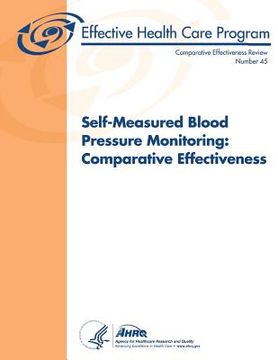Self-Measured Blood Pressure Monitoring: Comparative Effectiveness: Comparative Effectiveness Review Number 45 (in English)
Synopsis "Self-Measured Blood Pressure Monitoring: Comparative Effectiveness: Comparative Effectiveness Review Number 45 (in English)"
High blood pressure (BP), or hypertension, is a common, long-term health condition, particularly among older adults. Untreated or ineffectively treated hypertension leads to increased cardiovascular morbidity and mortality, and increased consumption of health care resources, thus levying high human and financial costs to society. In adults, hypertension is defined as a persistently elevated BP equal to or greater than 140/90 mmHg. In children, the diagnosis is made from an average of three or more BP readings greater than the 95th percentile for age, sex, and height. The Seventh Joint National Committee (JNC 7) guideline recommends a BP goal of 140/90 mmHg or less in the general population and a lower threshold of 130/80 mmHg or less in patients with diabetes mellitus or chronic kidney disease. The World Health Report 2002 estimates that over 1 billion people have high BP and that hypertension is responsible for 4.5 percent of the global disease burden. Within the U.S., about 76.4 million adults are affected. Despite improvements in the quality of health care and life expectancy, it is expected that the prevalence of hypertension will continue to rise worldwide. The World Health Organization ranks high BP as the third highest risk factor for burden of disease, highlighting the contribution of hypertension directly and indirectly to the development of numerous diseases. Hypertension has been identified as a major risk factor for cardiovascular disease, and is an important modifiable risk factor for coronary artery disease, stroke, peripheral vascular disease, congestive heart failure, and chronic kidney disease. High BP directly results in 7 million deaths every year. Effective management of BP has been shown to dramatically decrease the incidence of stroke, heart attack, and heart failure. However, hypertension is usually a lifelong condition, and long-term adherence to lifestyle modification and medication treatment remains a challenge in the management of hypertension. Thus an increasing focus has been placed on developing strategies that can improve adherence and result in satisfactory BP control with the goal of improving health outcomes for hypertensive patients. One such proposed method is self-measured blood pressure (SMBP) monitoring. SMBP refers to the regular self-measurement of a patient's BP at home or elsewhere outside the office or clinic setting. However, while patient self-participation in chronic disease management appears promising, the sustainability and clinical impact of this strategy remain uncertain. The primary objective of this review is to evaluate whether the use of SMBP monitoring influences outcomes in adults and children with hypertension, and to what extent these changes in outcomes can be attributable to the use of self-monitoring devices alone or the use of SMBP plus additional support or attention. The intention of this report is to inform physicians' decisionmaking as to whether to encourage the use of SMBP monitoring alone or along with additional support, and to assist health care policymakers and payers with decisions regarding coverage and promotion of SMBP monitoring. Key Questions include: 1. In people with hypertension (adults and children), does self-measured blood pressure (SMBP) monitoring, compared with usual care or other interventions without SMBP, have an effect on clinically important outcomes? 2. In trials of SMBP monitoring, how do clinical, surrogate, and intermediate outcomes (including SMBP monitoring adherence) vary by the type of additional support provided? 3. How do different devices for SMBP monitoring compare with each other (specifically semiautomatic or automatic vs. manual) in their effects on clinical, surrogate, and intermediate outcomes (including SMBP monitoring adherence)? 4. In trials of SMBP monitoring, how does achieving BP control relate to clinical and surrogate outcomes? 5. How does adherence with SMBP monitoring vary by patient factors?

